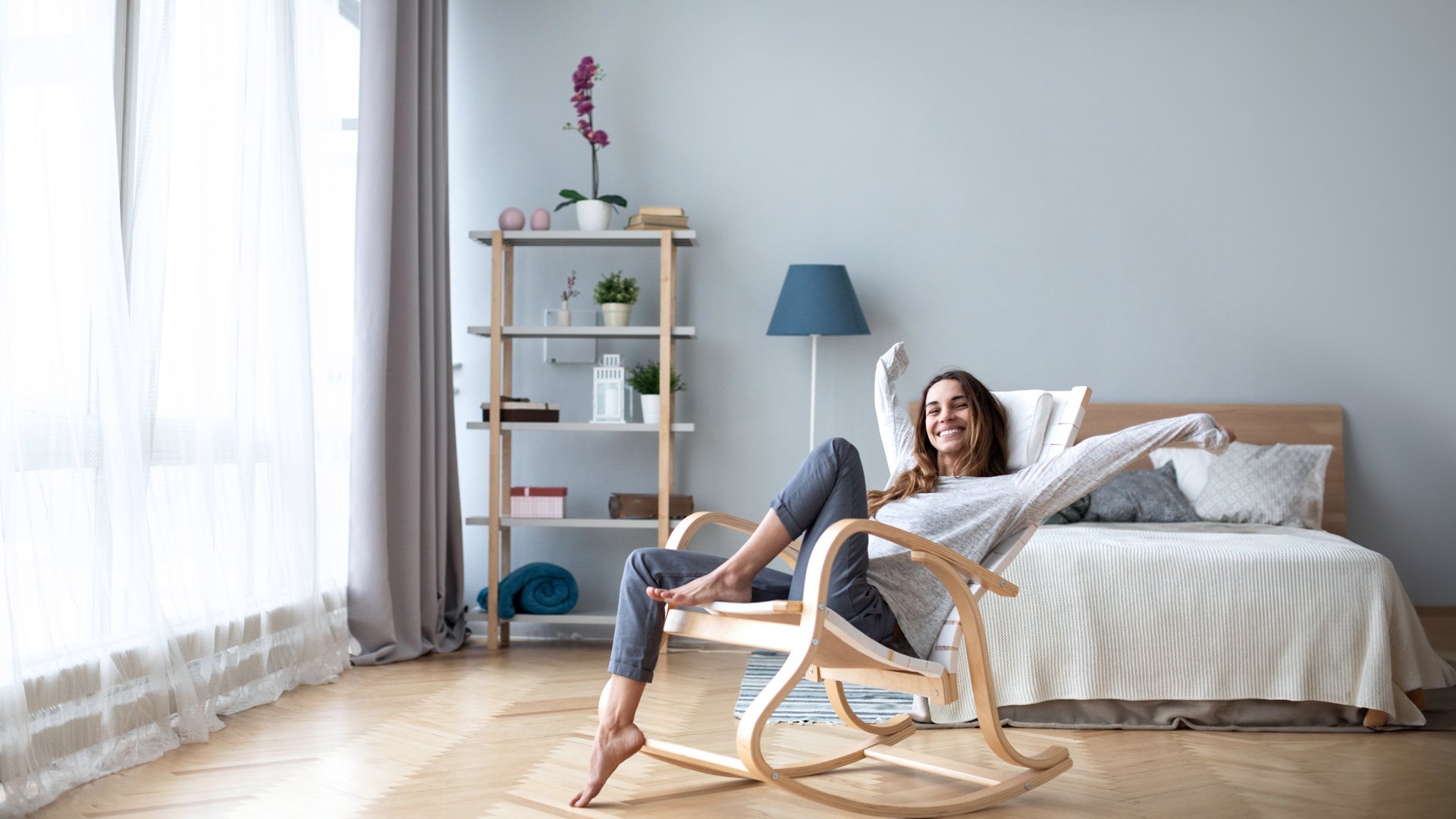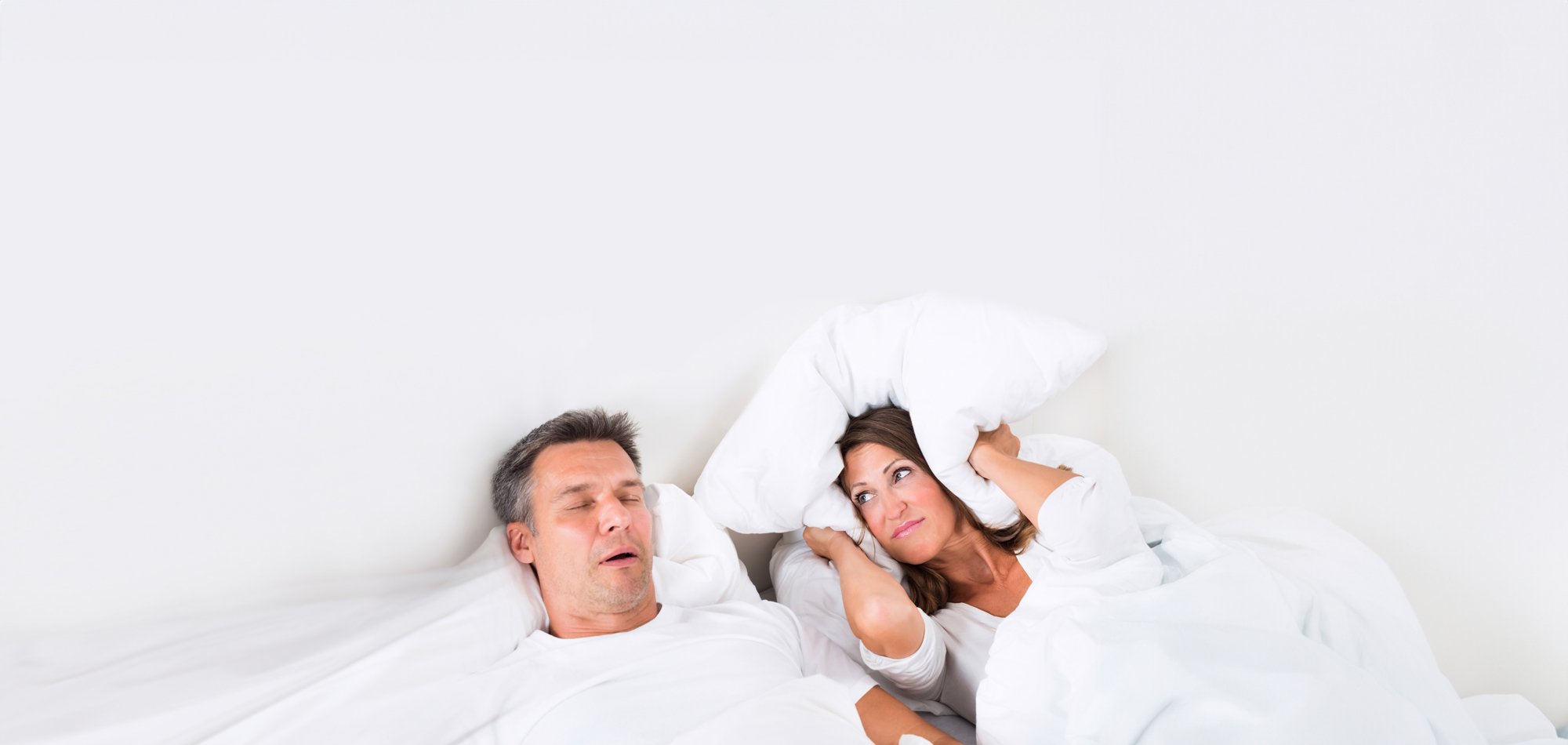
Get Back That Well Rested Feeling
LEARN ABOUT SLEEP DISORDERS AND HOW THEY CAN EFFECT YOUR HEALTH AND ENERGY
Solutions for Sleeping Problems
Sleep is 1/3rd of your life. Make it count.
Sleep is an important element for a happy, healthy life, yet is often overlooked and undervalued in our busy society.
1 in 4 people have some form of sleep disorder. Read below, and if you experience any of the symptoms below, contact us. We can help
Sleep Disorders
Please read below for more information about each sleep disorder.
SNORING AND SLEEP-RELATED BREATHING DISORDERS
Snoring
A very common condition caused by the obstruction of air into the lungs. The "extra" air gets redirected into the mouth, creating a vibration of the soft tissue of the palate.
READ MORE BELOW
Obstructive sleep apnea (OSA)
It occurs when a patient stops breathing during periods of sleep, usually as a result of blockage (obstruction) in the airway.
READ MORE BELOW
Central sleep apnea (CSA)
Pauses in breathing while asleep that are not caused by an obstruction but rather by a disorder of the central nervous system.
Upper airway resistance syndrome (UARS)
A condition in which the upper airway is reduced during sleep, resulting in disturbed sleep; can lead to snoring, daytime sleepiness, cognitive impairment, un-refreshing sleep, and frequent arousals from sleep.
SHIFT WORK AND CIRCADIAN RHYTHM DISORDERS
Shift work sleep disorder
A circadian sleep disorder in which a person experiences a constant or recurrent pattern of sleep interruption due to shift work schedule, resulting in difficulties initiating and maintaining sleep and/or excessive sleepiness when awake.
Delayed sleep phase syndrome
A disorder in which the timing of sleep and the peak period of alertness are delayed several hours relative to the societal clock.
Periodic Limb Movement Syndrome (PLMS)
A sleep disorder characterized by rhythmic movements of the limbs during sleep. The movements typically involve the legs, but upper extremity movements may also occur.
INSOMNIA SLEEPING DISORDERS
Insomnia
A common sleep disorder defined by persistent difficulties falling and/or staying asleep and/or non-restorative sleep.
PEDIATRIC DISORDERS
Pediatric sleep disorders
Sleep disorders in children include physiological problems such as obstructive sleep apnea abnormal, or disruptive behaviors during sleep such as sleepwalking or onset of conditions such as restless legs syndrome or excessive sleepiness.
NARCOLEPSY & HYPERSOMNIAS (Excessive Sleep)
Narcolepsy
A sleep disorder that causes excessive sleepiness, abnormal REM sleep, and frequent daytime sleep attacks.
Idiopathic hypersomnia
Persistent sleepiness lasting more than 3 months without abnormal issues with enter REM sleep.
Recurrent hypersomnia (Kleine Levin syndrome)
A rare sleep disorder characterized by persistent episodic hypersomnia and cognitive or mood changes.
NIGHT TIME SLEEP BEHAVIOURS
Nighttime sleep behaviours (parasomnias)
A range of disorders involving abnormal behaviours during sleep, such as sleepwalking or talking, sleep terrors, REM issues, sleep paralysis or nightmares.
Sleep Terrors
Also called "night terrors," episodes are characterised by extreme terror and a temporary inability to attain full consciousness.
Sleep walking/talking
Sleepwalking, also known as Somnambulism, is a condition in which a sleeping person exhibits behaviours associated with being awake and appears to be awake but is still sleeping. Sleep talking is when an individual vocalises in their sleep, anything from a few words to whole conversations.
Snoring and Sleep Apnoea
WHAT YOU NEED TO KNOW
What is a sleep apnoea?
The common signs of OSA or sleep apnoea ( apnea) are:
Loud snoring
Episodes of gasping or choking during sleep
Excessive daytime sleepiness and fatigue
Difficulty staying asleep
Morning headaches
Irritability and mood changes
Difficulty concentrating or memory problems
Reduced sex drive
Obstructive sleep apnoea (OSA) can have serious health consequences if left untreated. It is a sleep disorder characterised by repeated interruptions and pauses in breathing during sleep. These interruptions are caused by the relaxation of the throat muscles, leading to the partial or complete blockage of the upper airway. As a result, airflow is restricted or completely stopped, leading to reduced oxygen levels in the blood straining the entire body and mind. This can increase the risk of serious health issues, including high blood pressure, heart disease, stroke, diabetes, daytime fatigue, depression, impaired cognitive functioning, impotence and infertility, driving and work-related accidents, and early death. Untreated during pregnancy, it can increase the risk of complications such as gestational high blood pressure, preeclampsia, gestational diabetes, and preterm delivery. OSA should not be ignored!
Contact us if you suspect you or someone you know may have sleep apnea. We can help, we will diagnose and schedule a sleep study to understand the severity.
What is the solution?
Continuous Positive Airway Pressure (CPAP) machines are the first-line treatment for sleep apnoea, they come with many significant side effects thus, the vast majority of patients don’t use them, leaving them exposed to the risks of OSA each night.
Thankfully there is a very effective alternative to CPAP machines, and it is oral appliance therapy (OAT). They are discreet, portable, quiet, less invasive, more comfortable and they work! OAT is provided by specially trained dental clinicians and is suitable for all individuals with mild to moderate OSA. It involves wearing a Mandibular Advancement Splint (MAS). This customised dental device is worn in the mouth during sleep to keep the airway open.
Here are the steps involved in making a mandibular advancement splint:
Screening: Identify patients who might benefit from an oral appliance by conducting thorough screenings and assessments, including sleep questionnaires and physical examinations.
Diagnosis: If not already done, confirm the presence and severity of OSA through sleep studies and other diagnostic tests conducted by a sleep specialist or a qualified healthcare professional.
Making and fitting the oral appliance: Once diagnosed, the dentist or a dental specialist will take impressions of the patient's teeth and create a custom MAS. The appliance is designed to position the lower jaw forward during sleep, which helps keep the airway open.
Getting the appliance in the right therapeutic position: The dentist will adjust the MAS to ensure it fits comfortably and achieves the desired therapeutic effect. This may involve fine-tuning the advancement level based by running a few tests while they sleep.
Follow-up visits: Regular follow-up visits with the dentist or sleep specialist are crucial to monitor the effectiveness of the oral appliance and make any necessary adjustments. These visits also allow for addressing any issues or concerns the patient may have.
Living with an oral appliance: Patients will be instructed on properly using and caring for the oral appliance. They should wear it nightly as prescribed and maintain good oral hygiene. Patients will also be educated about lifestyle changes that can complement the effectiveness of the oral appliance
Types of sleep apnea
There are two main types of sleep apnea:
Obstructive Sleep Apnea (OSA) is the most common form of sleep apnea. It occurs when the muscles at the back of the throat fail to keep the airway open during sleep, usually due to the collapse of soft tissues in the throat and tongue. The blockage can cause loud snoring, gasping, or choking sounds as the person tries to breathe.
Central Sleep Apnea (CSA): CSA is less common and occurs when the brain fails to send the proper signals to the muscles responsible for controlling breathing. Unlike OSA, there is no physical obstruction in the airway, but the person experiences pauses in breathing.
Mixed Sleep Apnea: Some individuals may experience a combination of obstructive and central sleep apnea, known as mixed sleep apnea.
Sleep apnea can have serious health consequences if left untreated. During apnea episodes, oxygen levels drop, and carbon dioxide levels rise in the blood, straining the cardiovascular system. This can increase the risk of various health issues, including high blood pressure, heart disease, stroke, diabetes, and daytime fatigue.
What are the treatment benefits?
At Optima Sleep, Basil has had specialised training by the American Academy of Dental Sleep Medicine to provide effective Oral Appliance Therapy to manage obstructive sleep Apnoea and snoring. Proper management of sleep apnea can significantly improve sleep quality, physical and mental health, and quality of life. If you suspect you have sleep apnea, consult a healthcare professional or sleep specialist for evaluation and appropriate treatment. If you suffer from OSA and cannot tolerate CPAP therapy or are after an alternative, then a custom-made MAS is your answer. Your bed partner will thank you for it too!


